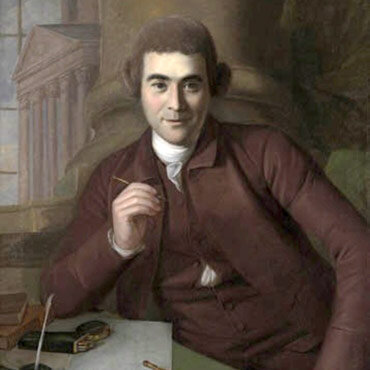Menokin’s Rescuers
On July 4, 1995, a small gathering of local advocates who had just started the Menokin Foundation were at the site to officially accept ownership of the remains of this house and the surrounding 500 acres from Edgar Omohundro.
The gathering included Tayloe Murphy, attorney and state legislator, and his wife Helen, an active leader in the preservation and conservation movement in Virginia; Richmond County attorney Tuck Taliaferro, and retired Exxon executive Martin King and his wife Tish.
Edgar Omohundro was the last surviving sibling of a large family that had owned Menokin since 1935. He wanted to do something about his place before he died and approached Mr. Murphy, Mr. Taliaferro, and Mr. King about it.
Department of Historic Resources Architectural Historian, Calder Loth, was an instrumental advisor to these grass roots volunteers and their efforts to save Menokin.
As Mr. Murphy accepted the position of Secretary of Natural Resources under Gov. Mark Warner, and Mr. Taliaferro was appointed to the position of Circuit Court Judge, Martin King, retired Exxon Executive who lived just a few miles from Menokin, took this place on with gusto during the first 10 years of the Foundation’s existence.
Upon Mr. King’s untimely death in 2004, Helen Murphy stepped into the leadership role as President. Her husband Tayloe Murphy, now retired from his position as Secretary of Natural Resources, would become Foundation President in 2010. Calder Loth remains active as an Honorary Trustee.

















